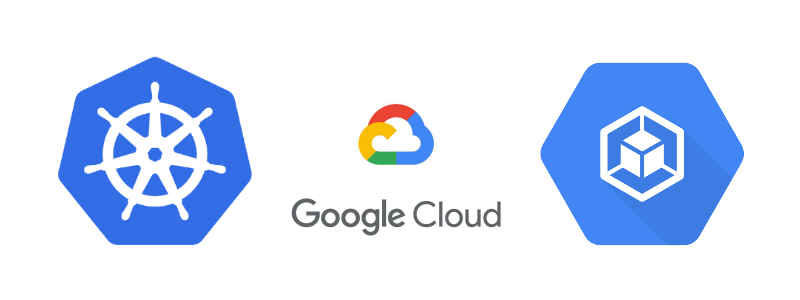
Google Kubernetes Engine (GKE) stands as one of the most robust and versatile managed Kubernetes services in the cloud computing landscape. Developed by Google, GKE leverages Kubernetes, an open-source container orchestration platform initially designed by Google, to automate, deploy, scale, and manage containerized applications seamlessly. This article delves into the core features, benefits, and practical applications of GKE, illustrating why it has become a go-to solution for enterprises aiming to modernize their IT infrastructure.
What is Google Kubernetes Engine (GKE)?
At its core, GKE is a managed environment for deploying, managing, and scaling containerized applications using Kubernetes. Developed by Google, GKE takes the complexities out of Kubernetes management by automating many operational tasks, allowing developers to focus on what they do best: building applications.
Key Features of GKE
Automatic Scaling:
GKE provides both horizontal and vertical scaling capabilities. Horizontal Pod Autoscaling adjusts the number of pod replicas based on demand, while Vertical Pod Autoscaling optimizes resource requests for individual pods, ensuring efficient use of CPU and memory.
Node Auto-Repair:
With GKE, you don’t have to worry about node failures. The platform continuously monitors the health of your nodes and automatically repairs any issues, ensuring high availability and minimizing downtime.
Integrated Monitoring and Logging:
GKE integrates with Google Cloud’s Operations Suite, providing comprehensive monitoring and logging. This integration helps you gain valuable insights into your application’s performance, facilitating proactive issue resolution.
Robust Security:
Security is a top priority with GKE. It offers features like Identity and Access Management (IAM), Binary Authorization for enforcing deployment policies, and Shielded GKE Nodes for enhanced protection against rootkits and bootkits.
Hybrid and Multi-Cloud Support:
Through Anthos, Google’s hybrid and multi-cloud solution, GKE allows you to manage Kubernetes clusters across different environments, including on-premises and other cloud providers, offering unparalleled flexibility.
Benefits of Using GKE
Simplified Management:
GKE abstracts much of the complexity associated with Kubernetes, making it easier for teams to manage containerized applications without needing deep Kubernetes expertise.
Cost Efficiency:
With features like auto-scaling, GKE ensures that you only pay for the resources you use, helping to optimize costs and avoid over-provisioning.
High Reliability:
GKE’s automated repair and scaling features ensure your applications remain available and performant, even under variable load conditions, providing a resilient infrastructure for your applications.
Enhanced Security:
GKE’s comprehensive Data Security measures help protect your applications and data, ensuring compliance with industry standards and safeguarding against threats.
Real-World Applications
Microservices Architecture:
GKE is ideal for microservices, enabling you to deploy, manage, and scale individual services independently. This modularity improves resource utilization and fault isolation.
Continuous Integration/Continuous Deployment (CI/CD):
GKE integrates seamlessly with CI/CD pipelines, automating testing and deployment processes. This integration accelerates development cycles and enhances software quality.
Big Data and Machine Learning:
GKE provides a scalable environment for big data processing and machine learning, making it easier to manage data pipelines and deploy ML models.
Gaming:
The gaming industry leverages GKE for its ability to handle high-traffic and fluctuating workloads, ensuring a reliable and low-latency backend for multiplayer games.
Getting Started with GKE
Starting with GKE is straightforward. Google Cloud’s console provides an intuitive interface for creating and managing clusters. With just a few clicks, you can set up a new cluster, deploy your containerized applications, and start taking advantage of GKE’s powerful features.
Create a GKE Cluster:
Navigate to the Google Cloud Console, select Kubernetes Engine, and create a new cluster. You can customize your cluster’s configuration to meet your specific needs.
Deploy Applications:
Use kubectl, the Kubernetes command-line tool, to deploy and manage your applications. GKE supports various deployment methods, including YAML files and Helm charts.
Monitor and Scale:
Utilize GKE’s integrated monitoring and auto-scaling features to keep an eye on your application’s performance and adjust resources as needed.
Conclusion
Google Kubernetes Engine is a game-changer for organizations looking to harness the full potential of Kubernetes without the operational overhead. Its rich feature set, combined with Google Cloud’s robust infrastructure, makes GKE an optimal choice for running containerized applications at scale. Whether you’re managing microservices, implementing CI/CD, processing big data, or developing games, GKE provides the tools and flexibility needed to succeed in today’s dynamic cloud environment. Dive into GKE and unlock the next level of cloud-native application development.